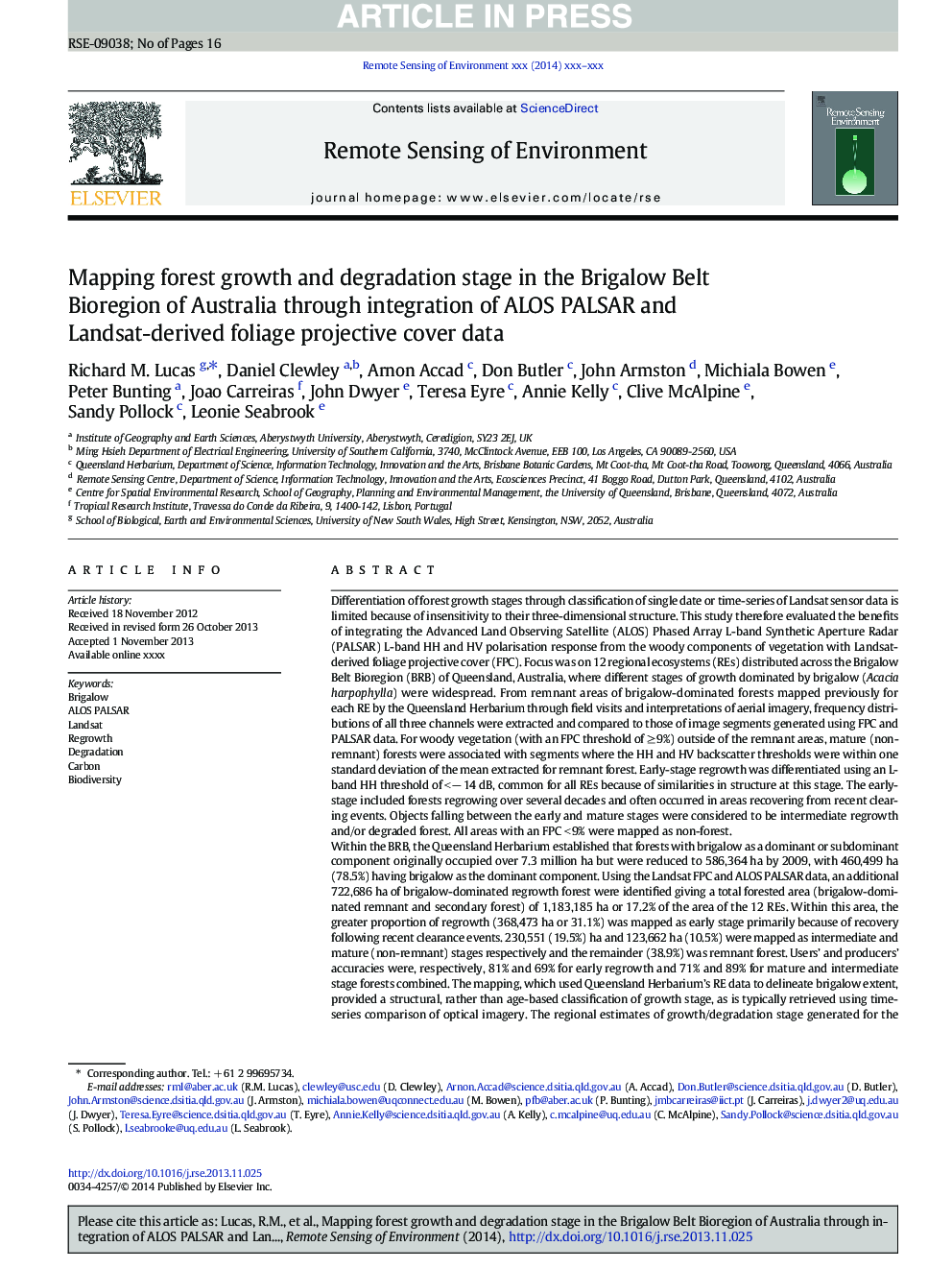| Article ID | Journal | Published Year | Pages | File Type |
|---|---|---|---|---|
| 6346587 | Remote Sensing of Environment | 2014 | 16 Pages |
Abstract
Within the BRB, the Queensland Herbarium established that forests with brigalow as a dominant or subdominant component originally occupied over 7.3 million ha but were reduced to 586,364Â ha by 2009, with 460,499Â ha (78.5%) having brigalow as the dominant component. Using the Landsat FPC and ALOS PALSAR data, an additional 722,686Â ha of brigalow-dominated regrowth forest were identified giving a total forested area (brigalow-dominated remnant and secondary forest) of 1,183,185Â ha or 17.2% of the area of the 12 REs. Within this area, the greater proportion of regrowth (368,473Â ha or 31.1%) was mapped as early stage primarily because of recovery following recent clearance events. 230,551 (19.5%) ha and 123,662Â ha (10.5%) were mapped as intermediate and mature (non-remnant) stages respectively and the remainder (38.9%) was remnant forest. Users' and producers' accuracies were, respectively, 81% and 69% for early regrowth and 71% and 89% for mature and intermediate stage forests combined. The mapping, which used Queensland Herbarium's RE data to delineate brigalow extent, provided a structural, rather than age-based classification of growth stage, as is typically retrieved using time-series comparison of optical imagery. The regional estimates of growth/degradation stage generated for the BRB provide a basis for optimising the use and recovery of these threatened brigalow ecosystems with benefits for biodiversity and carbon sequestration.
Related Topics
Physical Sciences and Engineering
Earth and Planetary Sciences
Computers in Earth Sciences
Authors
Richard M. Lucas, Daniel Clewley, Arnon Accad, Don Butler, John Armston, Michiala Bowen, Peter Bunting, Joao Carreiras, John Dwyer, Teresa Eyre, Annie Kelly, Clive McAlpine, Sandy Pollock, Leonie Seabrook,
